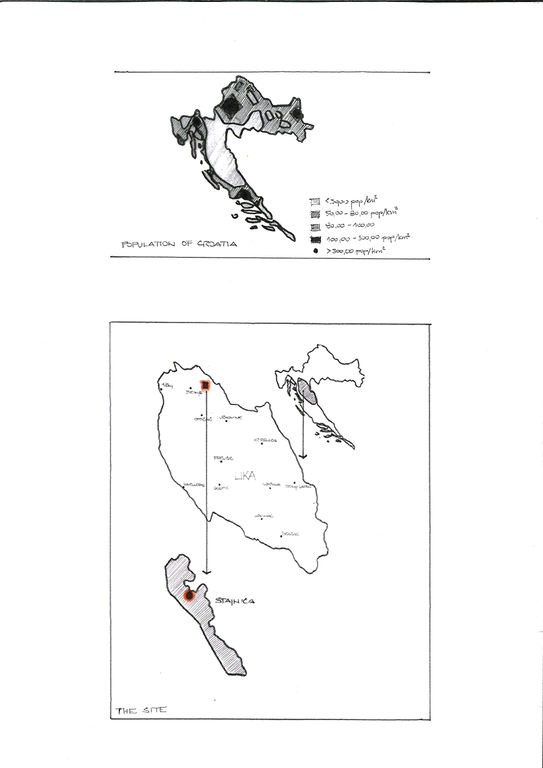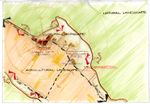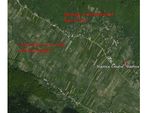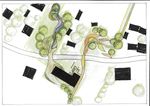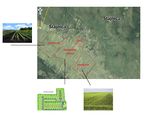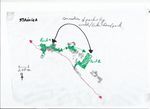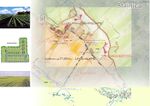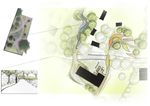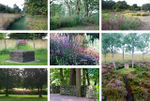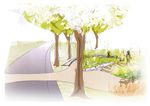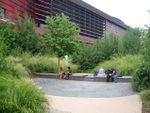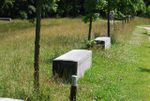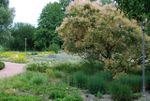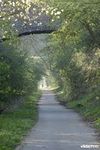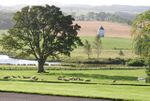Collaborative Design Planting Design Working Group 15: Difference between revisions
| (33 intermediate revisions by 4 users not shown) | |||
| Line 12: | Line 12: | ||
| '''Country''' || style="background:Lavender"|''Croatia'' | | '''Country''' || style="background:Lavender"|''Croatia'' | ||
|- | |- | ||
| '''Authors''' || style="background:Lavender"|''Adriana Papic, De Coninck | | '''Authors''' || style="background:Lavender"|''Adriana Papic, Ruben De Coninck, Tilak Nagaraju, Amalia Robredo'' | ||
|- | |- | ||
| colspan="3" align="center" style="background:silver"|[[File:Lika.jpg|300px]] | | colspan="3" align="center" style="background:silver"|[[File:Lika.jpg|300px]] | ||
| Line 32: | Line 32: | ||
|} | |} | ||
== Landscape and/or urban context of your case == | == Landscape and/or urban context of your case == | ||
The association of the words „planting design“, for most people in Croatia, are urban places. For example: parks, playgrounds, | The association of the words „planting design“, for most people in Croatia, are within urban places. For example: parks, playgrounds, green open spaces in general. The aim of these places is to provide a better quality of life for the people living in cities. But what about the people who are living in villages? | ||
However, without a rural- there wouldn’t be an urban context. They're in a reciprocal relationship. | However, without a rural- there wouldn’t be an urban context. They're in a reciprocal relationship. Building a designed green area in an urban setting has a counter impact on a rural one and vice versa. Residential areas tend to be developed around these causing a migration from rural areas to cities and as a result these become overcrowded, overpriced, too powerful and centralistic while at the same time villages are being left behind and emptied an the relationship between urban a rural becomes bipolar. | ||
A solution to this problem could be to increase the focus on rural places so they become an attractive place to live at. The attention has to be directed towards the compliance of the design and the natural, cultural and historical features of the region. The immigration of people would lead to a better represented land use which would make the culture and the spirit of these places alive again as well as improve the economic situation. The fertile dolines and valleys as one of the characteristic geographical features of this region would become agricultural land again which fits into the cultural and historical features of this region, too. Metaphorically, it means, that the landscape, nature, culture and the interests of people build a little organism. | |||
This concept could be used in every kind of village according to the natural, cultural and historical features of it. | This concept could be used in every kind of village according to the natural, cultural and historical features of it. In time the gap between cities and villages would become smaller while the balance of lifestyle would become better (in cities as well as in villages), and last but not least, the „wild construction“ in the cities would slow down and decrease, so cities would become relieved and the people living there would have a higher quality of life. | ||
[[File:543px-Ap001.jpg]] | [[File:543px-Ap001.jpg]] | ||
== What are the objectives of your design? == | == What are the objectives of your design? == | ||
Landscape architecture is a profession focused on the well-being of the people, the philosophy of this case is: improvement of quality of life of people living in cities by improving quality of life of people living in villages. People living in villages live surrounded by nature but they do not necessarily experience it. A lot of green does not make to a better quality of life nor diminishes the need of landscape design in them. Adriana Papic, part of our group lived in such a village as a child and describes it as a place “with empty houses, one street and two directions, no safety for children and no center for social contact, no paths through that nature, you could see it but could not experience it”. | |||
That idea should be an avocation to think about it, in general, to think about other ways, other solutions for the problem of today. | |||
That idea should be an | |||
== Analytical drawings == | == Analytical drawings == | ||
<gallery caption="Analytical Drawings " widths="150px" heights="150px" perrow="4"> | <gallery caption="Analytical Drawings " widths="150px" heights="150px" perrow="4"> | ||
Image:Analytical_drawing_a.p.jpg|analytical drawing 1 | Image:Analytical_drawing_a.p.jpg|analytical drawing 1 | ||
Image: | Image:Stajnica3.jpg|analytical drawing 2 | ||
Image: | Image:ana2.JPG|analytical drawing 3 | ||
Image: | Image:Analytical.jpg|analytical drawing 4 | ||
Image:ana1.JPG|analytical drawing 5 | |||
</gallery> | </gallery> | ||
== Projective drawings == | == Projective drawings == | ||
<gallery caption="Projective Drawings " widths="150px" heights="150px" perrow="4"> | <gallery caption="Projective Drawings " widths="150px" heights="150px" perrow="4"> | ||
Image: | Image:Projective_drawing_a.p.jpg|projective drawing 1 | ||
Image: | Image:Projective draw tilak.jpg|projective drawing 2 | ||
Image: | Image:projective drawing tilak copy.jpg|projective drawing 3 | ||
Image: | Image:Proyecto estructura.jpg|projective drawing 4 | ||
Image:Projective_drawing1_RDC.jpg|projective drawing 5 | |||
Image:Projective_drawing2_RDC.jpg|projective drawing 6 | |||
</gallery> | </gallery> | ||
== Design Synthesis == | == Design Synthesis == | ||
<gallery caption="Design Synthesis Drawings" widths="150px" heights="150px" perrow="4"> | <gallery caption="Design Synthesis Drawings" widths="150px" heights="150px" perrow="4"> | ||
Image: | Image:IMLA1ap.jpg|synthesis drawing 1 | ||
Image: | Image:IMLA2ap.jpg|synthesis drawing 2 | ||
Image: | Image:IMLA3ap.jpg|synthesis drawing 3 | ||
Image: | Image:IMLA4ap.jpg|synthesis drawing 4 | ||
</gallery> | </gallery> | ||
== Summary of the collaborative process == | == Summary of the collaborative process == | ||
As a Landscape Architect the fundamental objective for development of Stajnica area is by ensuring improvement in overall rural community conditions, economic, quality of life considerations such as the environment, health, infrastructure, housing and the preservation of natural and cultural heritage. | |||
Measures for the development of Stajnica encompass aid for: | |||
• Investments into farms | |||
• processing of agricultural products, | |||
• Young farmers, | |||
• Education, retraining and training, | |||
• Environmental protection measures in agricultural and forestry areas, | |||
• Forestry, | |||
• Land improvement measures, | |||
• Reconstruction and development of the countryside, | |||
• Preservation of cultural property, rural customs and manifestations, | |||
• Various agricultural and other activities aimed at realising additional or alternative sources of income, | |||
• Rural and hunting tourism and traditional crafts, | |||
• Improvement of rural infrastructure connected with the development of agriculture, | |||
• Promotion of Fine roads and other tourist routes, | |||
• Development of services in rural areas. | |||
Based on this project we have identified 3 main purpose of planting design: Functional, Ecological and Aesthetic. The extent to which our design serves these purposes can be used to judge the success of the project. Different planting design will have different priorities and these should be reflected in the attention given to meeting the functional, ecological and aesthetic requirements. | |||
== Image Gallery == | == Image Gallery == | ||
<gallery caption="Image Gallery" widths="150px" heights="150px" perrow="4"> | <gallery caption="Image Gallery" widths="150px" heights="150px" perrow="4"> | ||
Image: | Image:Pic4.jpg|image 1 | ||
Image: | Image:Pic2.jpg|image 2 | ||
Image: | Image:Pic1.jpg|image 3 | ||
Image: | Image:Pic3.jpg|image 4 | ||
Image:Pic 5.jpg|image 5 | |||
Image:slika1ap.jpeg|image 6 | |||
Image:Slika2ap.jpg|image 7 | |||
Image:Slika3ap.jpg|image 8 | |||
Image:Slika4ap.jpg|image 9 | |||
</gallery> | </gallery> | ||
== References == | == References == | ||
'' | ''Official site Geoportal DGU, Drzavna geodetska uprava, 2012, link: http://geoportal.dgu.hr/'' | ||
Images: | |||
1: Quai Branly (Gilles Clement) @A.Robredo, | |||
2: Museum in Holland @A.Robredo, | |||
3: A Parc in Berlin by Christian Mayer @A.Robredo, | |||
4: Centenary Riverside, Sheffield, UK, @A.Robredo, | |||
5: www.vildaphoto.net - old railway bicycle and walking road in Flanders. | |||
6: Whitburg Farm, Scotland @A.Robredo | |||
7: Broadwoodside, Scotland @A.Robredo | |||
8: Jupiter Artland, Scotland @A.Robredo | |||
9: Jupiter Artland, Scotland @A.Robredo | |||
Latest revision as of 16:46, 29 January 2014
---> back to group page working group 15
Planting Design and the Impact on Lika, Croatia
| Name | Landscape of Lika | |
| Location | Lika | |
| Country | Croatia | |
| Authors | Adriana Papic, Ruben De Coninck, Tilak Nagaraju, Amalia Robredo | |
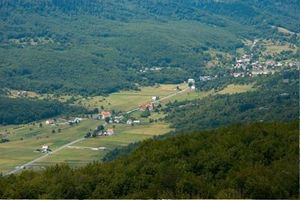
| ||
|
| ||
Landscape and/or urban context of your case
The association of the words „planting design“, for most people in Croatia, are within urban places. For example: parks, playgrounds, green open spaces in general. The aim of these places is to provide a better quality of life for the people living in cities. But what about the people who are living in villages?
However, without a rural- there wouldn’t be an urban context. They're in a reciprocal relationship. Building a designed green area in an urban setting has a counter impact on a rural one and vice versa. Residential areas tend to be developed around these causing a migration from rural areas to cities and as a result these become overcrowded, overpriced, too powerful and centralistic while at the same time villages are being left behind and emptied an the relationship between urban a rural becomes bipolar.
A solution to this problem could be to increase the focus on rural places so they become an attractive place to live at. The attention has to be directed towards the compliance of the design and the natural, cultural and historical features of the region. The immigration of people would lead to a better represented land use which would make the culture and the spirit of these places alive again as well as improve the economic situation. The fertile dolines and valleys as one of the characteristic geographical features of this region would become agricultural land again which fits into the cultural and historical features of this region, too. Metaphorically, it means, that the landscape, nature, culture and the interests of people build a little organism.
This concept could be used in every kind of village according to the natural, cultural and historical features of it. In time the gap between cities and villages would become smaller while the balance of lifestyle would become better (in cities as well as in villages), and last but not least, the „wild construction“ in the cities would slow down and decrease, so cities would become relieved and the people living there would have a higher quality of life.
What are the objectives of your design?
Landscape architecture is a profession focused on the well-being of the people, the philosophy of this case is: improvement of quality of life of people living in cities by improving quality of life of people living in villages. People living in villages live surrounded by nature but they do not necessarily experience it. A lot of green does not make to a better quality of life nor diminishes the need of landscape design in them. Adriana Papic, part of our group lived in such a village as a child and describes it as a place “with empty houses, one street and two directions, no safety for children and no center for social contact, no paths through that nature, you could see it but could not experience it”.
That idea should be an avocation to think about it, in general, to think about other ways, other solutions for the problem of today.
Analytical drawings
- Analytical Drawings
Projective drawings
- Projective Drawings
Design Synthesis
- Design Synthesis Drawings
Summary of the collaborative process
As a Landscape Architect the fundamental objective for development of Stajnica area is by ensuring improvement in overall rural community conditions, economic, quality of life considerations such as the environment, health, infrastructure, housing and the preservation of natural and cultural heritage.
Measures for the development of Stajnica encompass aid for: • Investments into farms • processing of agricultural products, • Young farmers, • Education, retraining and training, • Environmental protection measures in agricultural and forestry areas, • Forestry, • Land improvement measures, • Reconstruction and development of the countryside, • Preservation of cultural property, rural customs and manifestations, • Various agricultural and other activities aimed at realising additional or alternative sources of income, • Rural and hunting tourism and traditional crafts, • Improvement of rural infrastructure connected with the development of agriculture, • Promotion of Fine roads and other tourist routes, • Development of services in rural areas.
Based on this project we have identified 3 main purpose of planting design: Functional, Ecological and Aesthetic. The extent to which our design serves these purposes can be used to judge the success of the project. Different planting design will have different priorities and these should be reflected in the attention given to meeting the functional, ecological and aesthetic requirements.
Image Gallery
- Image Gallery
References
Official site Geoportal DGU, Drzavna geodetska uprava, 2012, link: http://geoportal.dgu.hr/
Images: 1: Quai Branly (Gilles Clement) @A.Robredo, 2: Museum in Holland @A.Robredo, 3: A Parc in Berlin by Christian Mayer @A.Robredo, 4: Centenary Riverside, Sheffield, UK, @A.Robredo, 5: www.vildaphoto.net - old railway bicycle and walking road in Flanders. 6: Whitburg Farm, Scotland @A.Robredo 7: Broadwoodside, Scotland @A.Robredo 8: Jupiter Artland, Scotland @A.Robredo 9: Jupiter Artland, Scotland @A.Robredo
About categories: You can add more categories with this tag: "", add your categories
